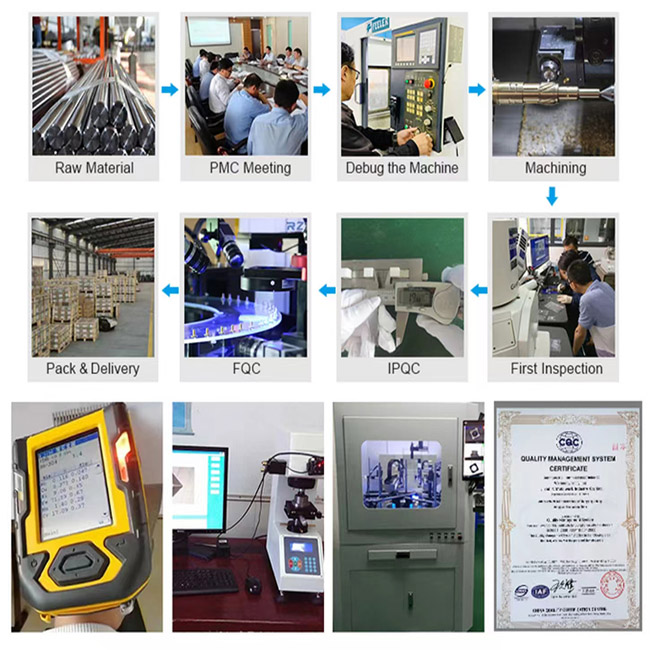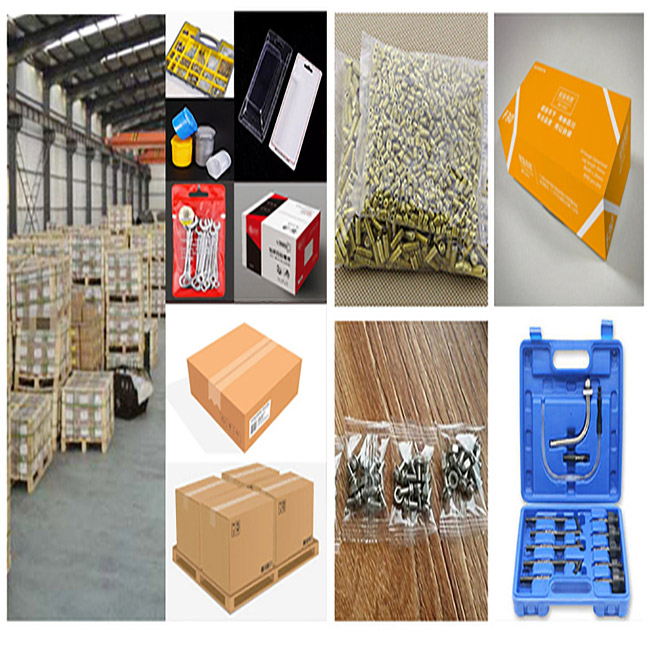| Sign In | Join Free | My frbiz.com |
|
| Sign In | Join Free | My frbiz.com |
|
| Categories | Metal Bolt |
|---|---|
| Brand Name: | JIA SHAN |
| Model Number: | DIN, ASEM, ISO |
| Certification: | ISO |
| Place of Origin: | China |
| MOQ: | 100 |
| Price: | USD0.2/pcs-USD1/pcs |
| Payment Terms: | T/T, Western Union |
| Supply Ability: | Batch order abailable |
| Delivery Time: | 1-5 weekds |
| Usage: | Fastening |
| Style: | shoulder bolt |
| Size: | Various sizes available |
| Head Style: | cap head/shoulder bolt |
| Strength: | High |
| Finish: | Plain |
| Manufacturer: | JIA SHAN Hardward Company |
| Length: | As customisation |
| Package: | Small Packing+Carton Packing+Pallet |
| Standard: | DIN |
| Package Quantity: | 100 pieces |
| Shape: | Self Tapping Screws |
| Measurement System: | INCH, Metric |
| Port: | Shenzhen |
| Quality: | Inspection before shipment |
| Color: | As customisation |
| Material: | Carbon Steel |
| Company Info. |
| Hunan Jia Shan Hardware Tech Co., Ltd. |
| Verified Supplier |
| View Contact Details |
| Product List |
Carbon Steel M6 M8 M10 Shoulder Metal Screw For Machinery Equipment
Zinc plating
Product Description:
Mold Manufacturing:
In mold manufacturing, shoulder bolts are essential for ensuring precision and smooth operation within molds. These fasteners are used to guide parts and components smoothly, playing a key role in enhancing both the accuracy of the molding process and the longevity of the molds themselves. Whether in injection molding, die casting, or compression molding, shoulder bolts are integral to maintaining the structural integrity of mold assemblies, enabling consistent and efficient production runs.
One of the primary functions of shoulder bolts in mold manufacturing is to guide and align moving parts within the mold. Molds often consist of multiple components that need to move or shift during the molding process to allow for proper part ejection, material flow, or cooling. The shoulder bolt’s smooth cylindrical shoulder provides a stable guide, ensuring that these moving parts remain aligned without causing interference or damaging the mold cavity. This precise alignment is crucial to the molding process because any misalignment can lead to defects in the molded product, such as warping or uneven material distribution.
In addition to guiding components, shoulder bolts are used to secure the mold parts together, ensuring they are tightly held in place during the molding cycle. The shoulder portion of the bolt allows for easy adjustment of the spacing between parts, facilitating smooth operation and reducing the risk of strain on the mold. By providing this level of control, shoulder bolts help improve the quality of the final product by ensuring that the mold components fit together seamlessly, which prevents gaps or inconsistencies in the molded item.
Furthermore, shoulder bolts contribute to the overall durability and performance of the molds. Molds are subject to high temperatures and pressure during the molding process, especially in industries like automotive or plastic injection molding, where materials like metals or thermoplastics are used. Shoulder bolts made from high-strength materials, such as stainless steel or hardened steel, can withstand the harsh conditions inside the mold without degrading, even under repeated use. The robust design of shoulder bolts ensures that the mold parts remain securely fastened and aligned over time, even as the mold experiences the stresses of repeated cycles.
Shoulder bolts are also important in extending the lifespan of the molds. Since molds are subjected to constant movement and friction, parts of the mold can wear out over time, leading to poor quality or inefficient production. The use of shoulder bolts helps to reduce wear by minimizing the amount of friction between moving components. Their smooth shoulder design ensures that mold components can shift or rotate freely without unnecessary resistance, which reduces the risk of wear and tear, ultimately prolonging the mold’s service life. This contributes to cost savings for manufacturers, as mold maintenance and replacement cycles are minimized.
Additionally, shoulder bolts are crucial in maintaining the accuracy and precision required in mold manufacturing. Many molds are designed to produce intricate and detailed parts, and even small deviations in mold alignment can result in defects. By providing precise alignment and consistent spacing, shoulder bolts help ensure that the molded products meet strict quality standards. This level of precision is especially important in industries such as medical device manufacturing, where the quality and consistency of the mold are paramount.
In conclusion, shoulder bolts are essential components in mold manufacturing, offering precise alignment, secure fastening, and smooth operation of mold parts. Their ability to withstand high pressures, temperatures, and wear makes them ideal for use in mold applications that require high levels of accuracy and durability. By improving the efficiency of the molding process and prolonging the lifespan of the molds, shoulder bolts play a critical role in ensuring high-quality production and reducing costs in the manufacturing of molded parts.
Applications:
Stainless Steel:
1, the basic knowledge of stainless steel
Stainless steel is an alloy material with corrosion resistance, and
its main components are an alloy of elements such as iron, chromium
and nickel. These elements can effectively resist oxidation and
corrosion, so that stainless steel has a high degree of durability
and aesthetics.
2, stainless steel maintenance methods
Cleaning
Keeping stainless steel products clean is an important part of
their maintenance. You can use mild detergents and soft cloth for
cleaning, avoid the use of detergents containing acidic and
alkaline components, so as not to damage the surface of stainless
steel. When removing dirt, you should try to avoid using irritating
cleaning tools to avoid scratching the stainless steel surface.
After cleaning, rinse with water and dry with a clean soft cloth.
3, the use of stain remover
For some stubborn dirt, you can use special stainless steel stain
remover for cleaning. But before using it, you should carefully
read and follow the instructions in the product manual. In
addition, stainless steel products on the dirt can be cleaned with
alcohol or vinegar, these common cleaners on stainless steel has a
certain decontamination effect.
Steel types:
| No. | C% | Cr% | Ni % | Mo % |
| 304 | 0.07 | 17.5-19.5 | 8.0-10.5 | / |
| 316 | 0.08 | 16.0-18.0 | 10.0-14.0 | 2.00-3.00 |
| 301 | 0.15 | 16.0-18.1 | 6-8 | / |
| 310 | 0.08 | 24-26 | 19-22 | / |
| 304L | 0.03 | 18-20 | 8-12 | / |
| 316L | 0.03 | 16-18 | 10-14 | 2-3 |
| 321 | 0.08 | 17-19 | 9-12 | / |
201, 304, 316 are austenitic stainless steel, according to the
performance of the non-magnetic, some of the performance of the
weak magnetic because of the smelting of the composition of the
segregation or improper heat treatment leads to the austenite in a
small amount of martensite or ferrite. Austenitic stainless steel
corrosion resistance comes from the formation of chromium oxide
protective layer on the metal surface. When the material
temperature is heated to 450 degrees -900 degrees, the structure
changes, will form chromium carbide along the edge of the crystal
and can not form a protective layer of chromium oxide, thus
reducing the corrosion resistance, this is also known as
‘intergranular corrosion’. As a result, there are 304L and 316L,
the two due to the low carbon content also reduces the
intergranular corrosion. In particular, the higher susceptibility
to intergranular corrosion does not mean that non-low carbon
content is more susceptible to corrosion, in a highly chlorinated
environment, this susceptibility is also higher.
304 stainless steel
304 is a general-purpose stainless steel that is widely used to
make equipment and machine parts that require good all-round
performance (corrosion resistance and formability). In order to
maintain the corrosion resistance inherent in stainless steel, the
steel must contain more than 18% chromium, more than 8% nickel content. 304 stainless steel is a grade of
stainless steel produced according to the American ASTM standard.
A2 stainless steel and A4 stainless steel, A2 is a class of 304
stainless steel, A4 is a class of 316 stainless steel, the main
difference between the two is here, some of the fastener industry
will be 302HQ and 304 referred to as: A2, 316 and 316L (C content
of carbon C is less than 03% of the stainless steel, you can
increase the ‘L’ logo) called A4.
What is the difference between a270 and a470 stainless steel bolts
Nuts are usually used in conjunction with bolts. Hexagonal nuts are
more widely used.C-grade hexagonal nuts are used in steel
structures, machinery and equipment with rough surfaces and low
requirements for precision.A-grade and B-grade hexagonal nuts are
mainly used in machinery and equipment with smooth surfaces and
high requirements for precision.
About Us


Package

|